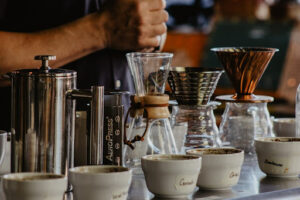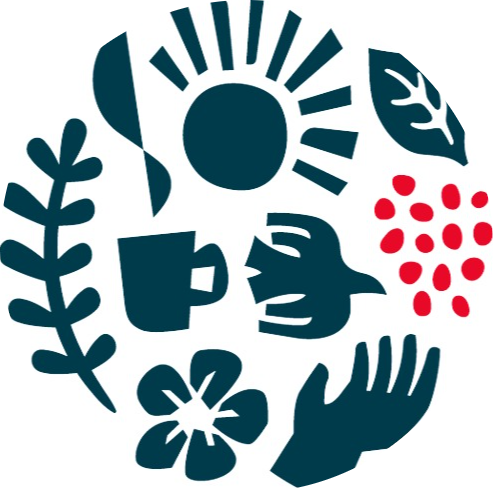Coffee has been a staple beverage around the world for hundreds of years. Every morning, billions of people wake up and reach for their favorite cup of coffee – but have you ever stopped to wonder where does coffee come from? Before our modern brewing techniques and high-end espresso machines, what was the secret history behind this beloved caffeinated beverage?
In this blog post, we’re tracing back through time to discover the unique origins of coffee. From its earliest beginnings in Ethiopia to its explosive rise in Europe and beyond, join us as we explore how one little bean came to dominate our morning routines.
The History Of Coffee
Coffee has quite the story – where it all dates back to Ethiopia, where the first coffee plants were discovered and cultivated thousands of years ago.
From there, it spread to surrounding areas such as South East Asia and Central/South America, where it was embraced and further developed. Fast forward to contemporary times, and we have Brazil, Vietnam, Colombia, Indonesia, and Ethiopia as the world’s biggest producers of coffee.
It’s undoubtedly fantastic to think about where this drink has come from over the centuries.
Where Is Coffee Grown Today?
Where do coffee beans come from? Coffee comes from a woody evergreen plant that enjoys a specific climate and humidity level, allowing coffee beans to develop their unique flavor.
Most of the coffee consumed worldwide is grown within the Bean Belt, a region including parts of Central and South America, Africa, the Middle East, and Asia. The coffee beans develop inside a cherry-like fruit on these plants and get harvested when they reach the perfect level of ripeness. Following extraction from their fruity home base, they are then roasted to perfection before they end up in our kitchens.
Coffee farming is an incredible process and one we should be grateful for – without it, we’d still be left yawning.
Arabica vs. Robusta
Regarding coffee, there are two main types of beans to choose from: Robusta (Coffea robusta or Coffea canephora) and Arabica (Coffea arabica).
- Robusta beans are known for having earthy notes, boldness, and a slightly grainy start with a smooth, peanut butter-like aftertaste.
- Arabica beans tend to be sweeter and softer – offering sugar, berries, and fruit aromas. These beans also have a higher acidity, leading to that famous winey flavor.
Depending on your taste preference – whether you like something bolder and more robust or something sweeter and softer – there is a perfect bean type for you.
The Best Regions For Growing Coffee
There are so many places around the world where you can find delicious and unique coffees. Still, some of the best regions for growing coffee include Central and South American countries such as Colombia, Costa Rica, and Brazil. Many of these countries have long histories of coffee production and are known for their high-quality beans grown in ideal climates.
In addition to producing some of the world’s most flavorful roasts, this region also has large quantities throughout each harvest season. So if you are wondering where does the best coffee come from or want to purchase beans or treats made with fresh coffee from a boutique blend, Central or South America is your best bet!
The Coffee-Growing Process
Harvesting coffee has been around for centuries and is an integral part of the industry. It’s a labor-intensive process that requires a delicate eye – harvesting by hand means checking the cherries to ensure they’re ripe and ready to go. In places with a large landscape like Brazil, some of the grunt work has been mechanized, which can save time and resources.
After the beans are harvested, they go through either the dry or wet processing methods, which affect how the end product will turn out.
Dry Method – It is commonly used in countries with limited water resources, simplifying the process without sacrificing flavor. The process goes with freshly picked coffee cherries spread out on large surfaces to dry in the sun, with the diligent workers carefully turning and raking them throughout the day to prevent them from spoiling. Then, they must be covered up at night or during rainfall to ensure that the cherries remain dry until harvest.
Wet Method – For the wet process, once all the cherries have been carefully harvested, they then go on to be pulped and sorted by density. This leaves us with only the parchment skin left on the bean before it is dried in preparation for further processing.
Organic And Specialty Coffee
Organic and specialty coffee sets some coffees apart from more traditional blends. In addition, organic coffee beans must originate from places where chemical fertilizers and pesticides are not used in the cultivation process, thus assuring consumers of a healthier product with naturally occurring nutrients intact – making for a possibly richer cup.
Specialty coffee follows rigorous standards to ensure consumers get only the highest grade of beans, unleashing your cup filled with aromas and flavors you didn’t know were possible from a simple bean.
If you’re looking for something unique that tastes better than traditional store-bought beans, organic and specialty coffee will give you the experience you’re looking for.
The Impact Of Climate Change On Coffee Production
One unfortunate consequence of rising global temperatures is its impact on where coffee beans come from. Coffee requires particular conditions for proper growth and development, making its production incredibly vulnerable to changes in temperature and rainfall levels. However, these ideal growing conditions are necessary for coffee plants to survive.
Every year, more and more farmers have to face more extreme weather conditions, such as heat waves, droughts, and floods, damaging their crop yields. Although some farmers have made changes, such as shade-growing techniques or adjusting their planting cycles, the future of global coffee production is heavily reliant on finding ways to immediately mitigate the effects of climate change for future generations to continue enjoying this cherished beverage.
Fair Trade Coffee
Fair Trade coffee is an organic, certified way of purchasing coffee beans that supports sustainable farming practices and ensures the farmers are paid a fair wage and access to better working conditions.
You can support global sustainability by buying Fair Trade coffee and getting great-tasting beans. Of course, not all coffee labeled as Fair Trade is necessarily organic or shade-grown, but they should all leave the farmers with a fairer profit. Beyond monetary benefits, most Fair Trade Certified roasters also get involved in environmental protection and quality control and even help support educational projects in the local communities where their beans are harvested.
In this way, Fair Trade helps promote a more ethical and effective global economy for everyone.
Discover The Story Behind Cherri Café And See How Premium Coffee Can Make The World A Better Place
At Cherri Café, we strive to be more than just a regular café selling premium coffee. Instead, we want our mission to be clear – to provide our customers with the highest quality of coffee and help small-scale farmers and cooperatives by purchasing our premium coffee beans directly from them.
Through our mission, we want to impact communities worldwide and ensure that everyone can enjoy great-tasting coffee knowing its production was ethically sourced. Visit our website for the best selection of coffee beans and know our story!




